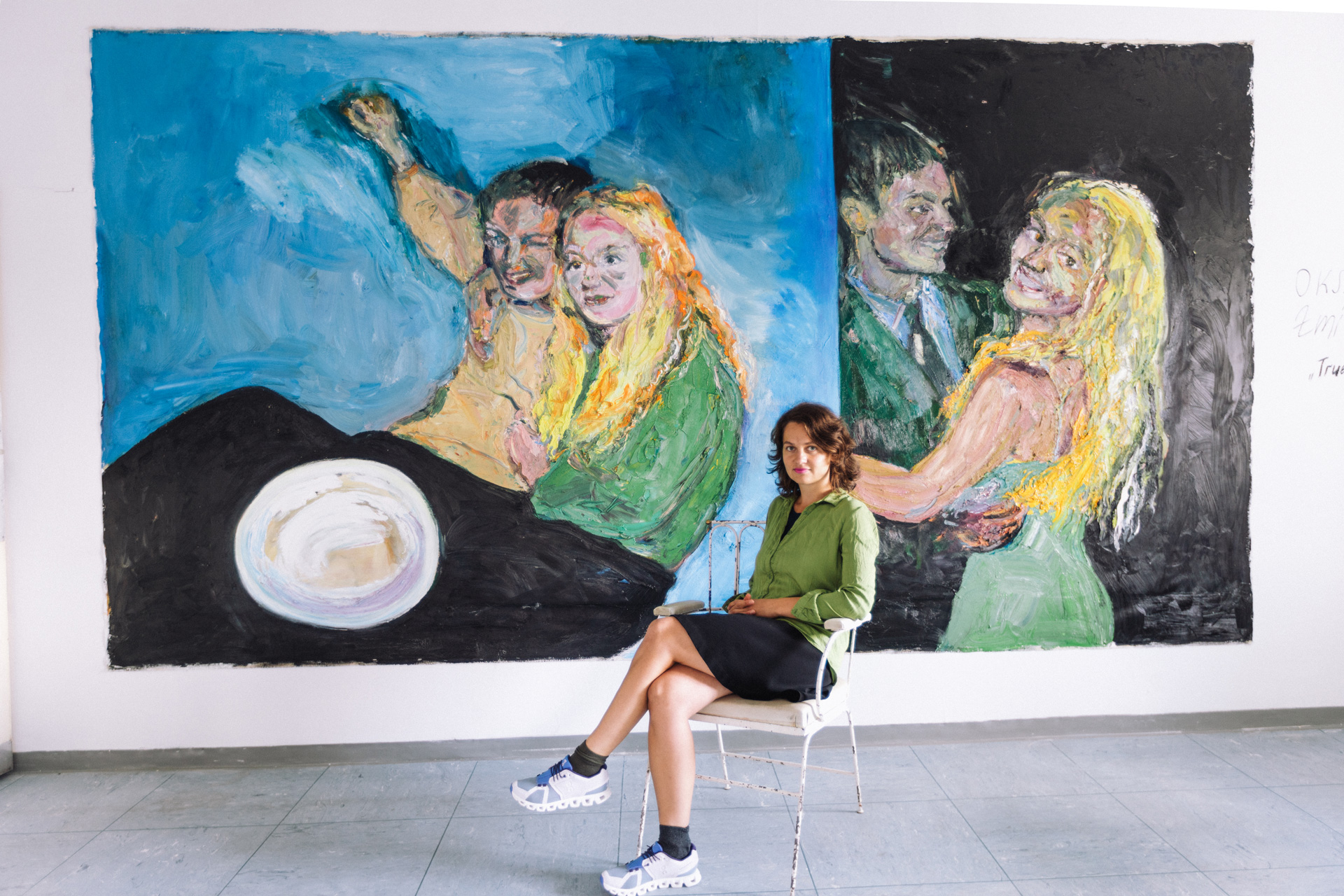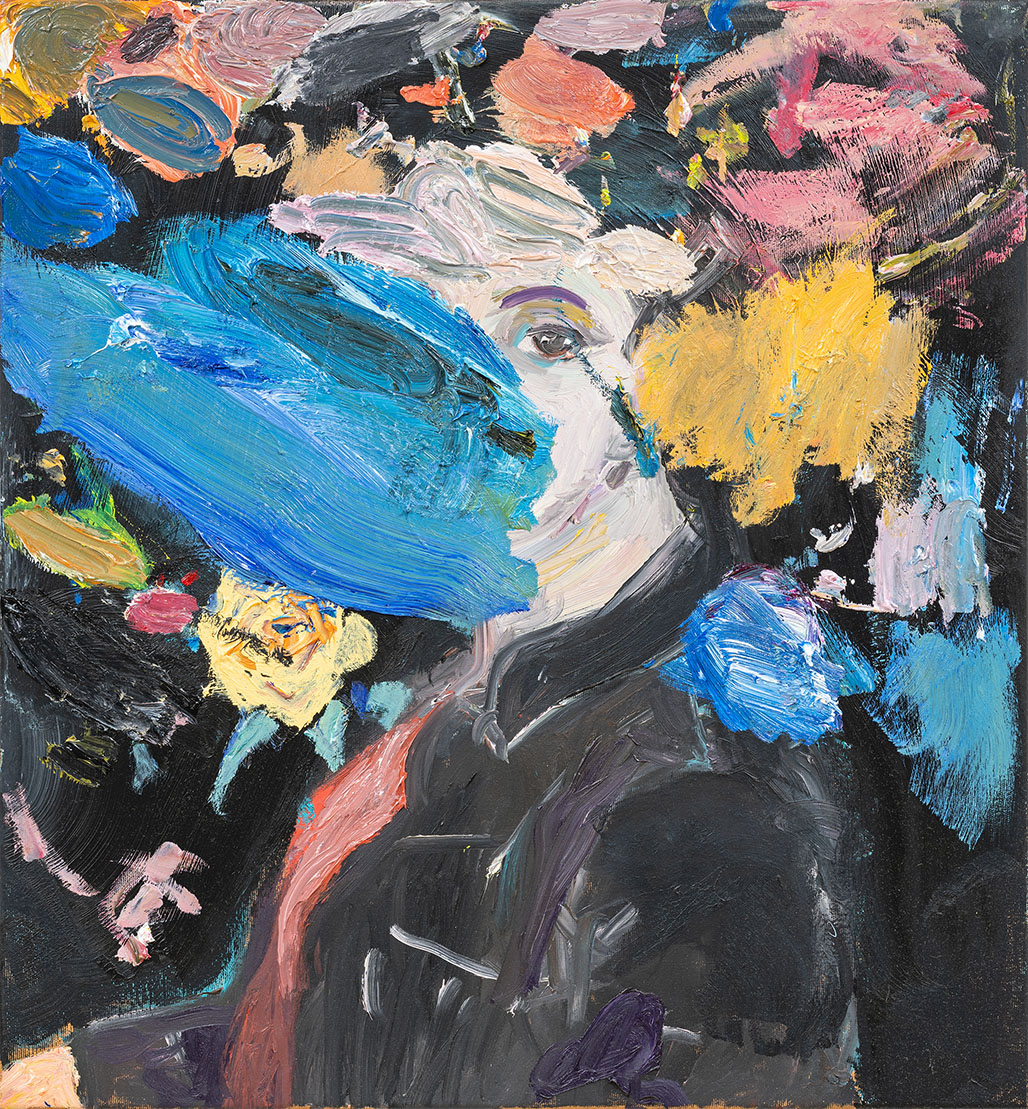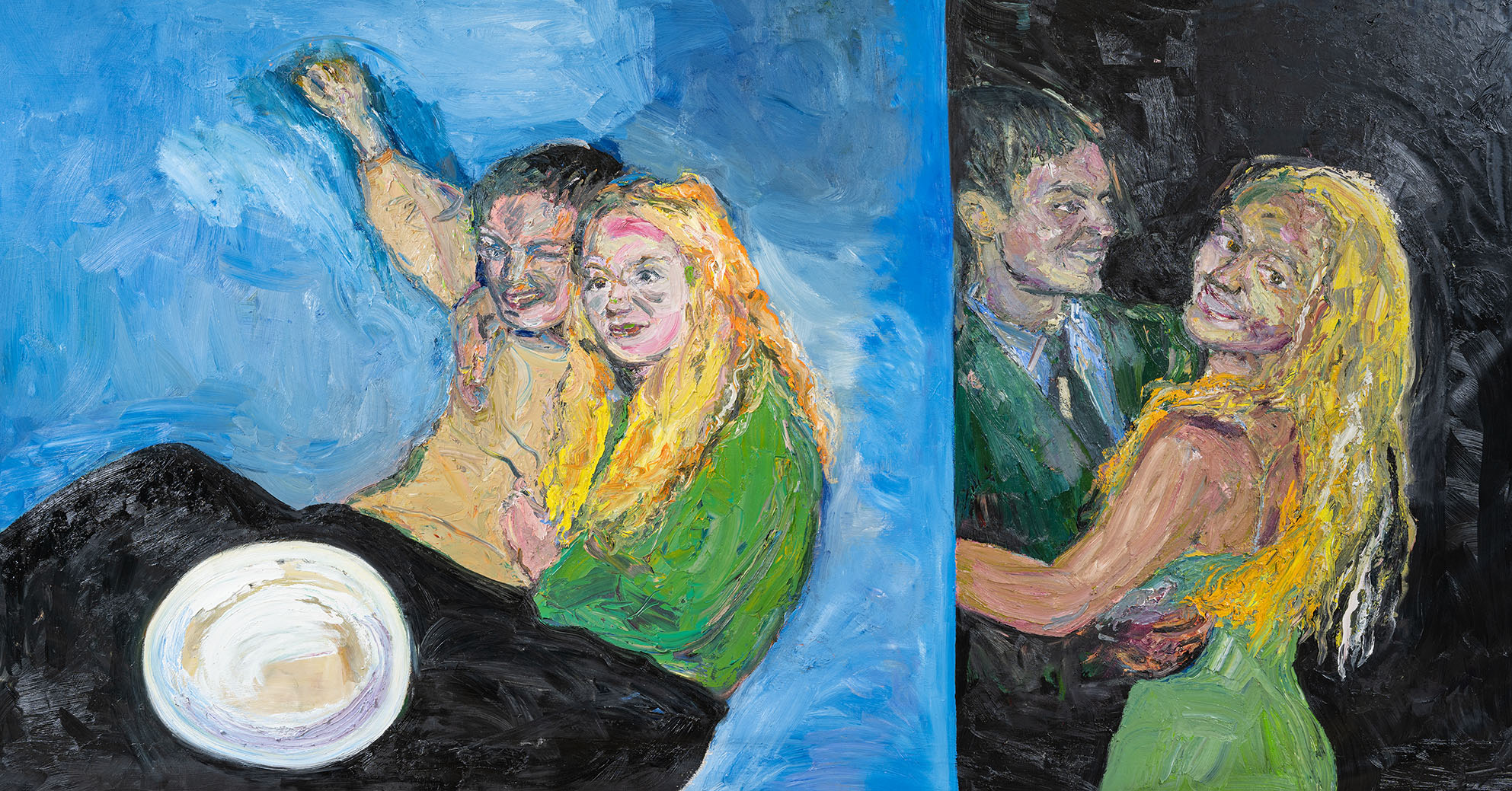Ukrainian artist Oksana Zmiyevska (1987, Crimea) is an open minded and careful observer of herself and the people around her. She says she learned respect for her images from Amoako Boafo. Daniela Hammer-Tugendhat and Verena Krieger would have shaped her understanding of the connections between time and art. Johanna Kandl, with whom she studied painting at the University of Applied Arts from 2005 to 2011, made her aware of her color competence, and Otto Zitko showed her how to do the candlelight test.
She paints human bodies and characters in all their appearances, forms and shades. In doing so, Zmiyevska practices an often intuitive approach, the gut, the feeling are important to her. The models she portrays in sessions that often last several hours are found in her personal environment as well as in everyday situations. On impulse, she sometimes approaches people and asks them if she can paint them. The portrait is at the center of her work, but while for several years working with models in the studio remained her preferred method of working, she has recently taken a different path and is increasingly turning to autobiographical themes.
An example of this is “True Love”, an oil painting measuring more than two by four meters that shows the then 16-year-old artist with her first childhood love in Ukraine. The picture surface appears divided, the two-thirds on the left are taken up by a couple sitting in front of a blue background. The young woman’s arm is casually and equally intimately wrapped around her boyfriend’s shoulder, and while her gaze falls dreamily out of the picture, the young man next to her winks provocatively mischievously at the viewers. At first glance, the blonde curly-haired girl in the picture has little in common with today’s Zmiyevska – here she casts more of a glance at a past self, an intimate but also reflective look at her time in Ukraine before she came to Austria. With the news of the war in the country of her birth, where she spent her childhood and youth, came the return of memories of it and the urge to confront them.
Zmiyevska uses various strategies to create moments of tension in her works, the image division in “True Love“ is only one example, the cut friend disappearing behind the left image area in the right image. In the portrait “Stefanie” it is the blobs and areas of color, patterns and lines that cover the head of the portrayed person that lend the portrait an irritating intensity. In rough brushstrokes, impasto and almost like mixed stains on a color palette, they cover more than half of the face, which in turn frays in a wildly free ductus. As fragmentary as the portrayed remains, her gaze stands out all the more concisely from the clearly drawn, visible eye. The black ground in front of which the portrayed woman, dressed in a black top, sits, intensifies the feeling of the undefined.
“Beach”, on the other hand, seems bursting with summer energy. The view of a beach scene in which dark bodies loom over a bright yellow sandy beach, a sea that could also be sky, bathers, wading in the water. But here, too, Zmiyevska builds on a social constellation; the reclining figure, for instance, follows the conversation of the two figures standing further back, with its head slightly raised. Here Zmiyevska’s nuanced use of color becomes apparent, deliberate contrasts that actually counteract the relaxed, summery motif and create a moment of irritation that constitutes the tension of the painting.
Zmiyevska’s works are full of the joy of working with people, attention to small details, attitudes, facets. In their observation and interpretation lies the artistic strength, from which all her images live. She plays with our images of self and desire, various modes of (self-) representation, which she takes up and processes again and again. At the same time, however, her work always remained media-related, reflexive, oscillating between the joy of devoting herself to painting, in intuitive-enthusiastic color inspirations and her no less present struggle with the canvas, the color, the painterly process.
Text by Valentin Häckl



